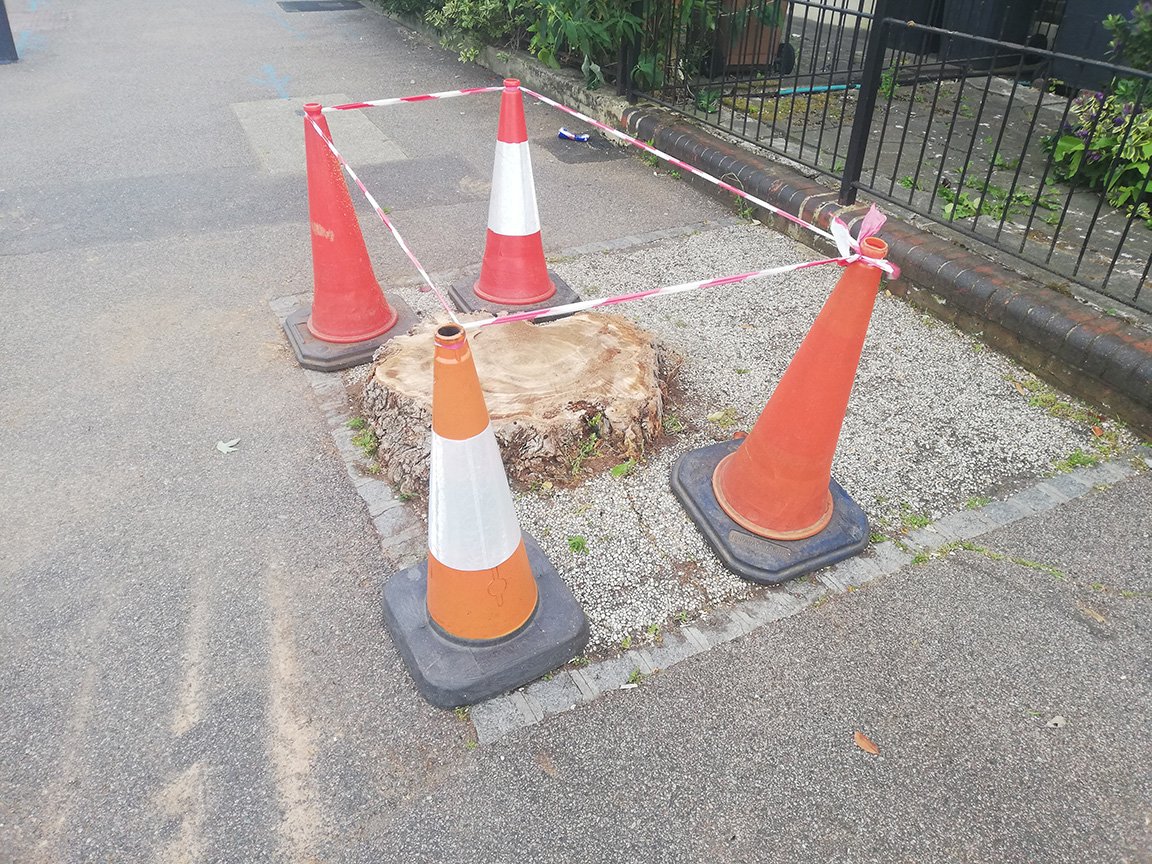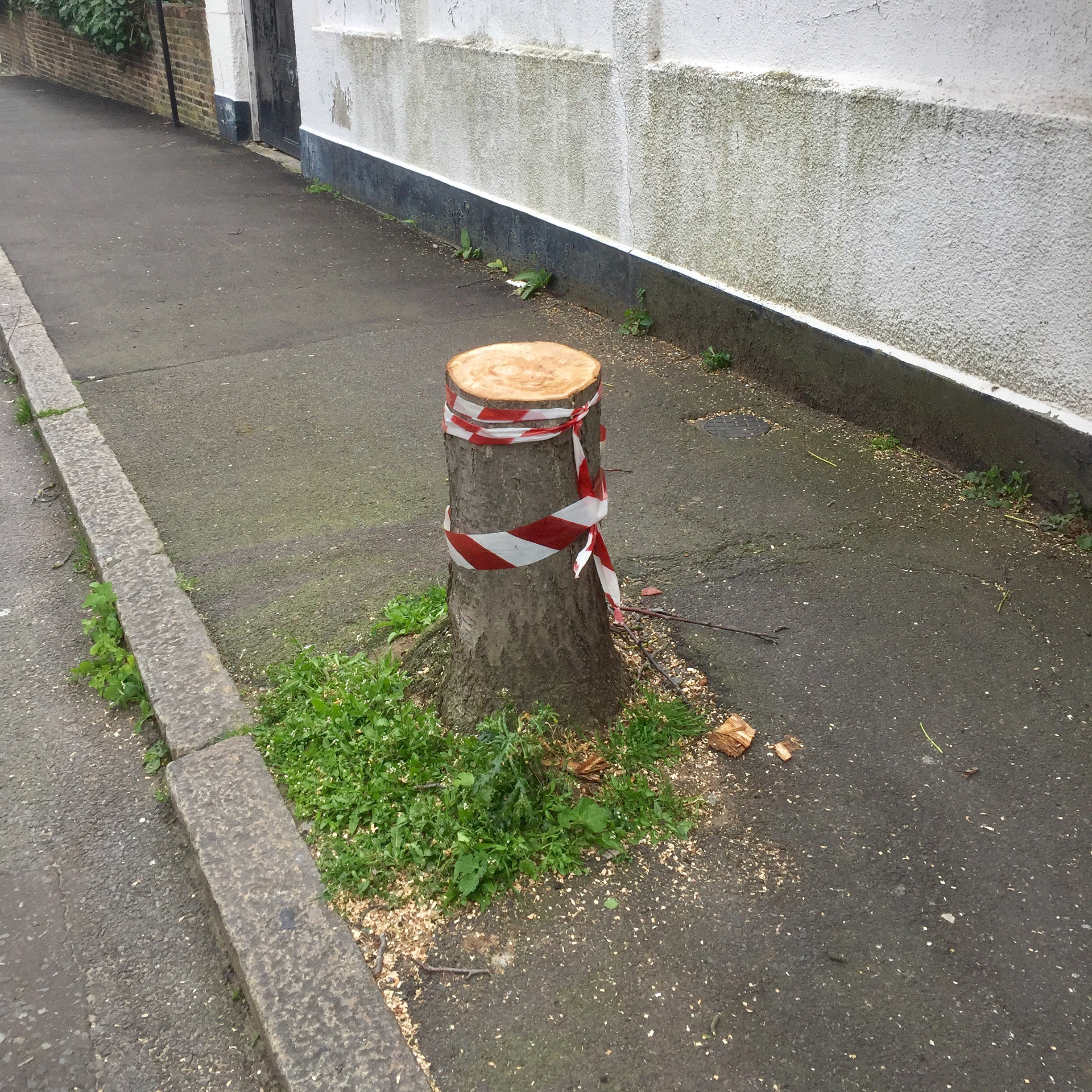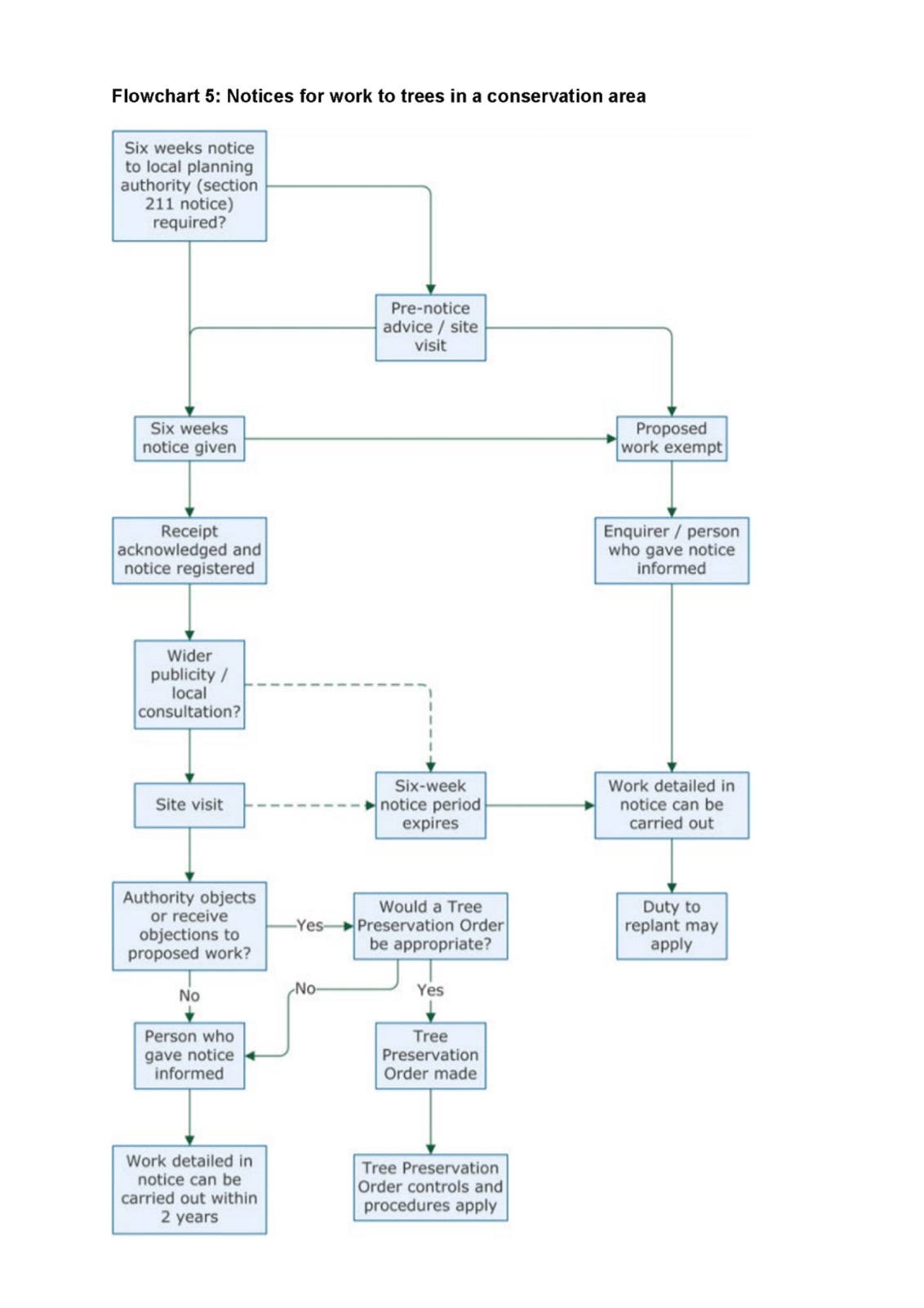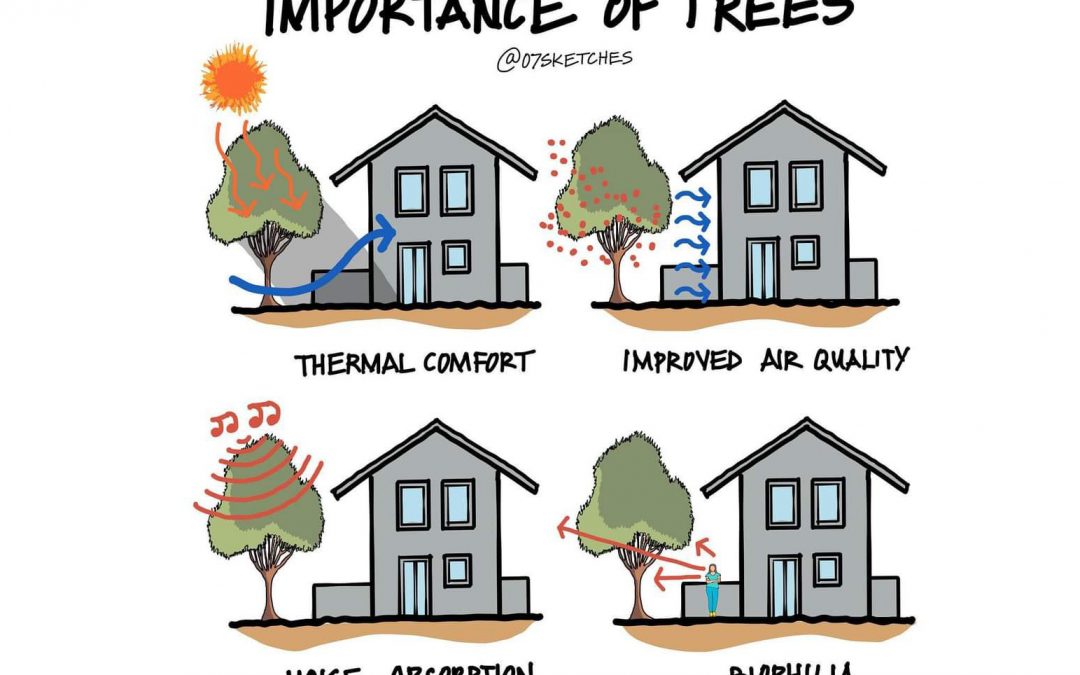The benefits of trees are important and undisputed. They help to maintain biodiversity, cool buildings, reduce flood risk, and absorb carbon. There is also a clear correlation between life expectancy and a leafy environment (1) so what’s not to like? Unfortunately canopy cover is usually higher in richer areas where trees can increase house prices by around 15%. As lower income families have less ability to choose where they live this means that the benefits are not equitably shared across communities.
St John’s is a small community straddling two conservation areas in Lewisham. Under Conservation law, local planning authorities are under a duty to preserve or enhance the character or appearance of conservation areas as a whole. In many ways this concept of ‘conservation’ was a positive idea, but it is now in need of a makeover. In the past it simply meant ‘conserving our heritage’. However, in a climate emergency we also need to think about ‘conserving our legacy’.


In St John’s we are losing our trees and the perception locally is that there is little transparency about the process by which it has been decided that these trees should be removed. As a resident of a conservation area, we are required to submit a Section 211 Notice to the local planning authority if we do work to trees, there are exceptions to this (image below). Where a tree in a conservation area has been removed without permission a replacement tree must be planted by law (2). A section 211 notice is not required for cutting down trees on behalf of the authority. It would also appear that the same rules don’t apply in regard to the replacement of trees. However, local planning authorities are under a duty to preserve or enhance the character or appearance of conservation areas as a whole. A Key part of that character and appearance may be the trees (3). It is ironic that conservation rulings affect the architectural details of our houses but not how we preserve the natural milieu. Some of our trees are 150 years old and an important part of the legacy we want to conserve. This is currently at risk from the Council’s short-termist policies that seem to see trees as removable, replaceable or redundant.

Many trees are removed using the justification of subsidence risk. In many cases, subsidence is due to multiple causes and felling a tree will not resolve the issue. Lewisham is built on clay, which the changing climate does not favour. Climate Action Lewisham have suggested that there has been a failure to champion alternative solutions to protecting properties, ignoring the value of trees (4). There are also engineering solutions to ‘damaged’ pavements such as flexible paving and root removal. It is concerning that a low-cost short-term view may lead to trees being removed that will be expensive to replace and won’t provide the same benefits for many years.
This situation is not unique to Lewisham. A recent report that investigated the battle to save Sheffield’s street trees has recently concluded that the council’s behaviour amounted to a serious and sustained failure of strategic leadership, encouraging a culture that was unreceptive to external views, discouraging of internal dissent and prone to group think (5). The issue arose in 2012 when a 25-year private finance initiative (PFI) deal was awarded to outsourcing firm Amey, which included the removal and replacement of 17,500 trees, by the end of 2016 approximately 5000 trees had been felled. It was also discovered that recommendations from the Independent Tree panel (ITP) set up by Sheffield City Council (SCC) were ignored, destroying public trust and confidence in SCC.
The St John’s Society are trying our best to replace trees that have been lost. We would also like to see a reduction in the number of trees being removed by Lewisham’s contractors as they aren’t being replaced and despite our best efforts, we are unable to keep up. The St John’s Society raised funding locally for three street trees that were planted in October of 2022. The next round of funding we bid for will see three trees planted along St Johns Vale; the trees will be planted in October 2023. We still have funding for three more trees for the following planting season. If you would like a tree on your street and have the time to water it, please contact the St Johns Society for the attention of Ben Langford.
Links and Notes
1)Bevan 2021 Clean up, Green up and Level up: how to build a future city. The environment Agency https://www.gov.uk/government/speeches/clean-up-green-up-and-level-up-how-to-build-a-future-city
2)Town and Country Planning ACT 1990 Section 211 https://www.legislation.gov.uk/ukpga/1990/8/section/211
3)Town and country planning Act 1990 Section 72 https://www.legislation.gov.uk/ukpga/1990/9/section/72
4) Climate Action Lewisham 2021 Lewisham’s mature trees https://climateactionlewisham.org/2021/10/01/lewisham-mature-trees/
5) Lowcock (2023) Sheffield Street Trees Inquiry https://www.sheffield.gov.uk/sites/default/files/2023-03/sheffield_street_trees_inquiry_report.pdf
Main image credit – @07sketches

